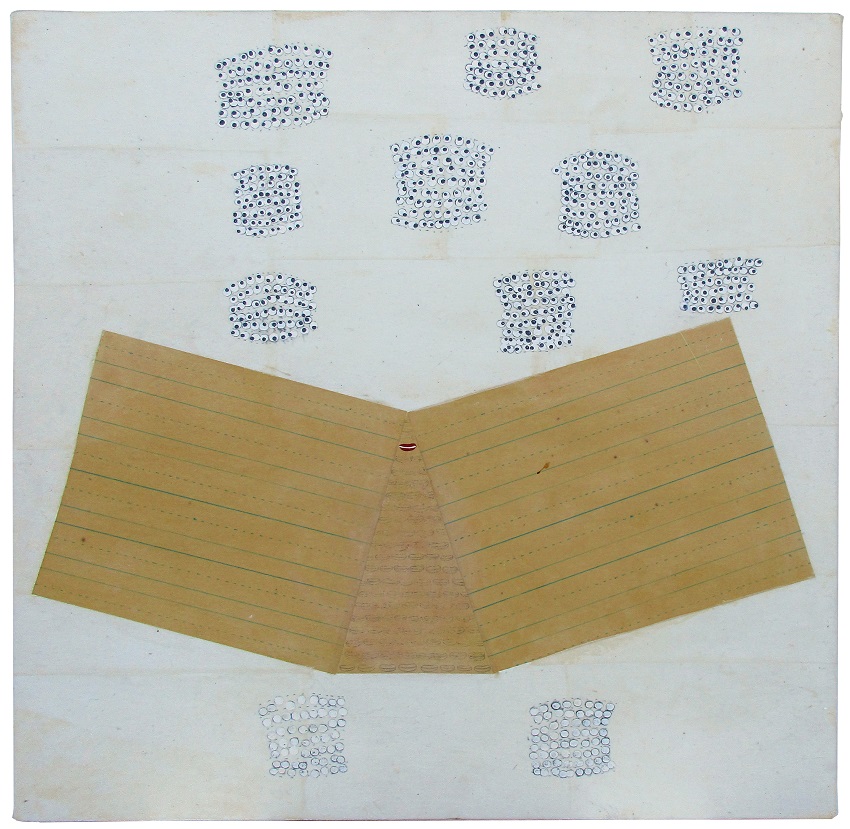
Ellen Gallagher, Untitled, 1995. Oil, pencil, and paper, 24 × 24 inches (61 × 61 cm). Gift of Ellen Matilda Poss. Courtesy the artist. © Ellen Gallagher
Over the past three decades, Ellen Gallagher has built a body of work that confronts the history of Black representation. In the late 1980s and early 1990s, Gallagher attended the School of the Museum of Fine Arts in Boston and was a member of the Cambridge-based Dark Room Collective, a group of poets and artists who hosted writing workshops and gatherings for Black artists.
Gallagher began her career creating minimal paintings influenced by artists such as Agnes Martin, but distinguished herself by combining nonrepresentational forms with figural elements. Since the late 1990s, she has pivoted toward a more appropriative methodology, using images from magazines such as Ebony or Jet and then cutting, collaging, and transforming the original material to explore how a history of representation manifests itself in the lived conditions of Blackness in America.
Untitled is exemplary of Gallagher’s early work. The artist glued standard penmanship paper on to stretched canvas to create an abstract shape, and then drew and painted over this collaged ground. From a distance, the piece resembles a minimalist painting, but a closer look reveals clusters of drawn, stylized eyes and lips informed by racist minstrelsy and blackface physiognomy. Gallagher has said that the “earliest American abstraction” is the minstrel show, and has used what she calls the “disembodied ephemera of minstrelsy”—facial or bodily features that are seen and deployed out of context—as potent symbols. By questioning what is reducible to symbol and what cannot be hidden from view or mind, Untitled reveals the ways that abstraction and minimalism are implicated by and embedded within issues of race and racism.
2016.05